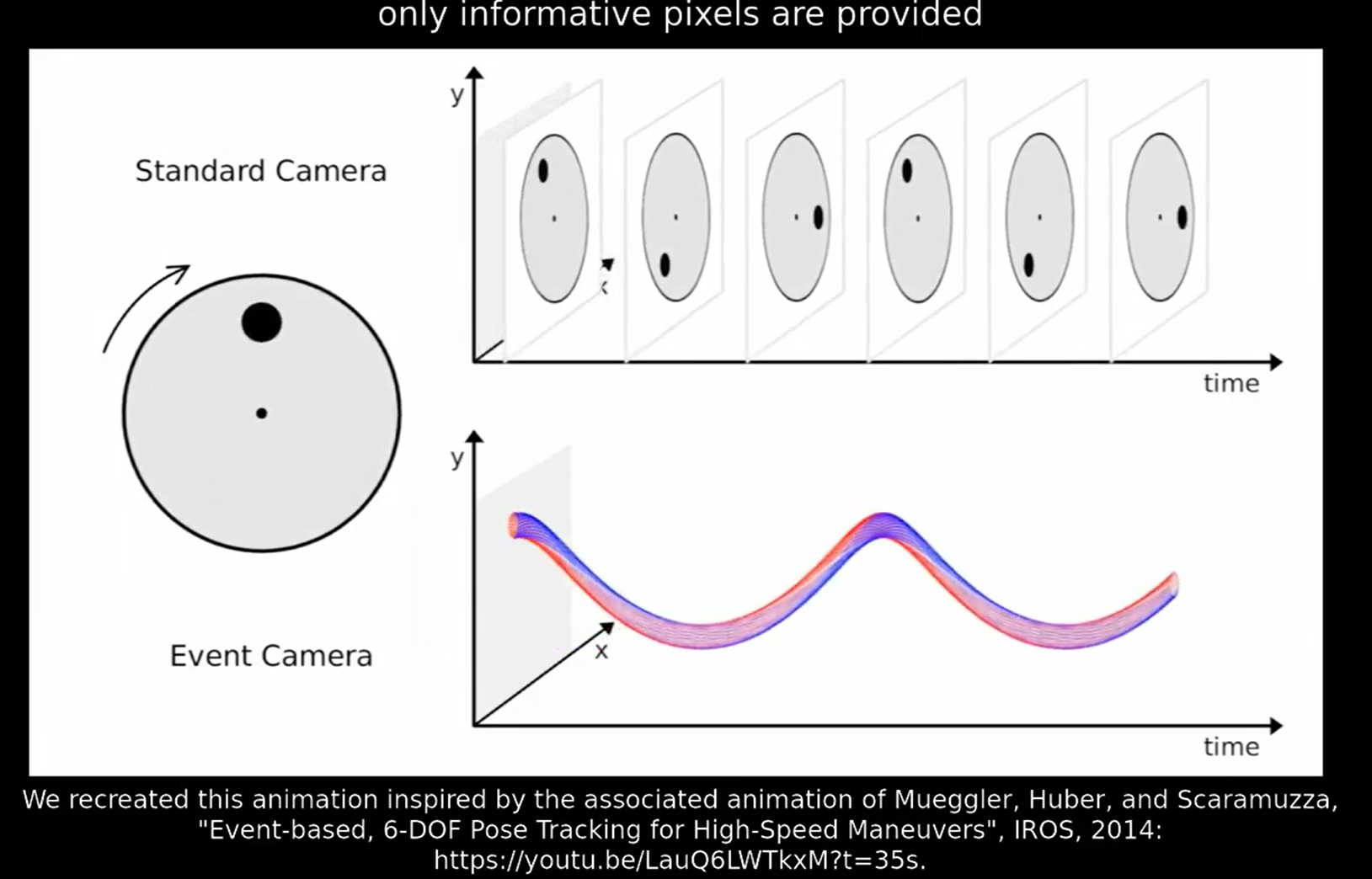Event camera - class review
Last updated on:3 years ago
There are problems such as low latency, motion blur, and dynamic ranges for using the photos taken by standard cameras. The event camera doesn’t have these problems.
Introduction
An event camera is a novel sensor that measures only motion in the scene. It is also regarded as an imaging sensor that responds to a local change in brightness. It has the advantages: low latency (~1\mu s), no motion blur, ultra-low power, and high dynamic range (140 dB instead of 60 dB). However, it can’t be used in conventional machine learning algorithms because its data representaion is asynchronous pixels and doesn’t have intensity information (only binary information).
The Events can be inserted into Discretized 3D Volume (x, y, t) or 4D tensor (x, y, t, p).
The event camera captures each pixel inside an event camera and operates independently and asynchronously, reporting changes in brightness as they occur and staying silent otherwise.
Application
These results were only to show that it should be possible to design more efficient algorithms that process events end-to-end without passing through image reconstruction. However, to design end-to-end approaches for event cameras, we need more data! But event cameras are new, so there is a shortage of large scale datasets compared to standard cameras! It is possible to recycle event camera data from standard camera data.
At night
Saturation
Reference
[1] Event Cameras: Opportunities and the Road Ahead (CVPR 2020)
本博客所有文章除特别声明外,均采用 CC BY-SA 4.0 协议 ,转载请注明出处!